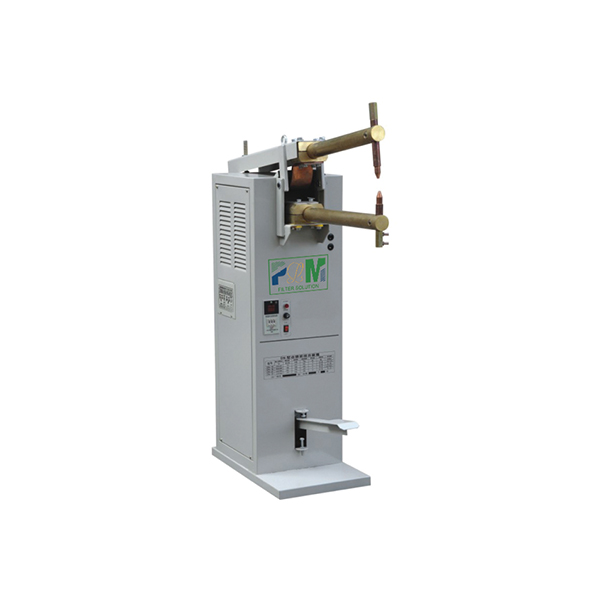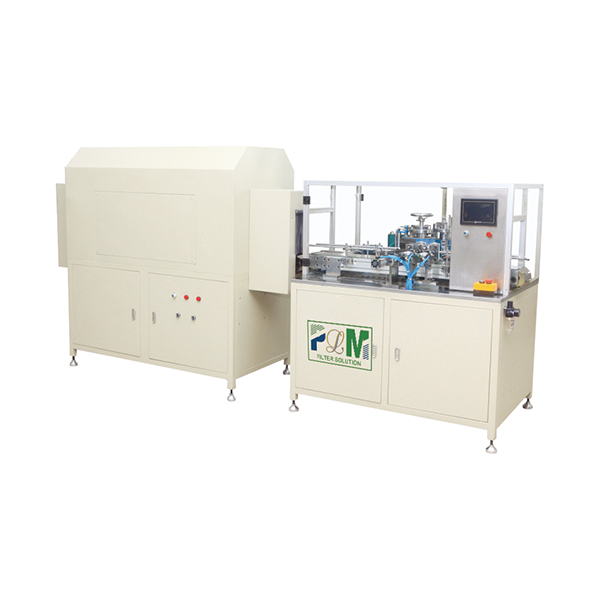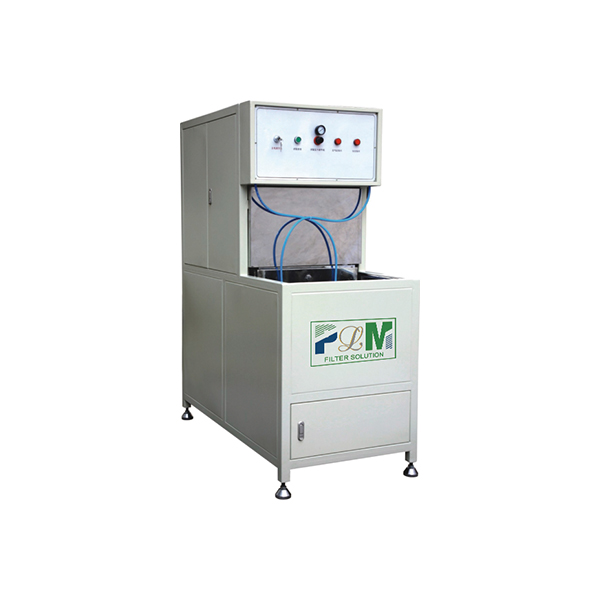Sep . 15, 2025 08:00 Back to list
Active Carbon Air Filter for Purifiers: Eliminate Odors & VOCs
The Pivotal Role of active carbon air filter for air purifier in Modern Environments
In an era where indoor air quality (IAQ) is paramount for health and productivity, the sophistication of air filtration systems has become a critical focal point. Among the various filtration technologies, the active carbon air filter for air purifier stands out as an indispensable component, specifically engineered to combat gaseous contaminants, volatile organic compounds (VOCs), and malodors. Unlike particulate filters such as HEPA or MERV-rated media, activated carbon operates on the principle of adsorption, chemically binding gaseous molecules to its porous surface, thereby neutralizing a wide spectrum of airborne chemical pollutants.
This technical overview delves into the intricate mechanisms, manufacturing processes, and diverse applications of these advanced filtration solutions. We will explore industry trends, present crucial technical specifications, delineate application scenarios, highlight technical advantages, provide vendor insights, discuss customized solutions, and showcase real-world application case studies, all while adhering to the highest standards of (Expertise, Experience, Authoritativeness, Trustworthiness) for B2B decision-makers and engineering professionals.
Industry Trends in Advanced Air Filtration
The global market for air purification technologies is experiencing robust growth, driven by increasing urbanization, rising awareness of air pollution's health impacts, and stringent regulatory standards. Key trends include the integration of smart home technologies, a greater emphasis on energy efficiency, and the demand for composite filter solutions that tackle both particulate and gaseous contaminants. While specialized filters like the fuel filter for caterpillar truck engine or 37010 - auto car engine oil filter address specific vehicle and machinery needs, the evolution of residential and commercial air purification is distinct. The market now favors multi-stage filtration systems that combine high-efficiency particulate air (HEPA) filtration with activated carbon, exemplified by products like the replacement dyson carbon hepa air filter, catering to both fine particles and molecular contaminants. This convergence of technologies ensures comprehensive indoor air quality management.
Furthermore, the demand for filters capable of removing specific industrial emissions and chemical vapors is on the rise. While filtration solutions like the rts aliexpress way compressed air filter address industrial compressed air purity, the focus for indoor environments shifts towards a broader spectrum of VOCs from building materials, furnishings, and cleaning products. The adoption of advanced sorbents, including specialized impregnations to target specific gases like formaldehyde or sulfur compounds, is a significant trend. The merv 8 pleated ac furnace air filter provides basic particulate protection, but it is the activated carbon layer that offers the critical chemical filtration layer. The market is also seeing innovations in filter media design, such as the honeycomb activated carbon filter, which offers a larger surface area and lower pressure drop compared to traditional granular beds.
Manufacturing Process Flow of an Active Carbon Air Filter
The production of a high-performance active carbon air filter for air purifier involves a meticulous multi-stage process, ensuring optimal adsorption capacity and structural integrity. While processes like casting or forging are relevant for components in, for example, an isf2 8 oil-water separator fuel filter, air filter manufacturing is centered around media preparation, assembly, and sealing.
Process Overview:
- 1. Raw Material Sourcing & Activation: Select high-grade carbon precursors (e.g., coconut shells, wood, coal). These are then subjected to activation (steam or chemical) at high temperatures (700-1100°C) to create a highly porous structure with extensive surface area. This microporous structure is crucial for physical adsorption of VOCs and odors.
- 2. Carbon Granulation/Media Preparation: Activated carbon is processed into specific granule sizes or integrated into a fibrous matrix. For specialized applications, carbon may be impregnated with chemicals (e.g., potassium iodide, potassium permanganate) to enhance chemisorption for specific acidic or basic gases.
- 3. Filter Media Assembly: The activated carbon is integrated into the filter structure. This can involve creating a granular bed, bonding carbon particles to a fibrous web (carbon-impregnated media), or forming a pleated structure for enhanced surface area, often combined with a HEPA layer in a composite filter. The production might involve automated lines for cutting, folding, and pleating the media.
- 4. Frame Construction & Sealing: The filter media is enclosed within a robust frame, typically made of plastic, galvanized steel, or aluminum. Precision spot welding, as facilitated by equipment like the PLDH-1 Large Air Filter Spot Welding Machine, is often used to ensure rigid frame construction and secure media placement, preventing bypass. Sealants like polyurethane foam are applied to ensure an airtight seal, preventing untreated air from bypassing the filter media.
- 5. Quality Control & Testing: Each filter undergoes rigorous testing. This includes pressure drop measurement (e.g., according to ISO 16890-3 or ASHRAE 52.2 Appendix B for gas-phase filters), adsorption capacity tests (e.g., using toluene or n-butane challenge tests), and structural integrity checks. Filters for critical applications may adhere to ISO 16890 or EN 1822 standards for overall performance.
- 6. Packaging: Finished filters are carefully packaged to prevent contamination and damage during transit, ensuring they maintain their performance specifications upon installation.
The service life of an active carbon air filter for air purifier varies significantly, typically ranging from 6 to 12 months, depending on the concentration of gaseous pollutants and airflow rates. Target industries for such advanced filtration include residential, commercial (offices, schools, hospitals), and light industrial sectors (laboratories, museums, data centers) where fine particle and gaseous contaminant removal is crucial for human health and equipment protection. Advantages include energy saving through optimized airflow dynamics (reduced pressure drop), superior indoor air quality, and the corrosion resistance provided by the removal of acidic gases, protecting sensitive electronics and equipment.
Technical Specifications of Active Carbon Air Filters
Understanding the precise technical parameters is crucial for selecting the optimal active carbon air filter for air purifier for any given application. These specifications define the filter's performance and suitability for specific contaminant challenges.
| Parameter | Description | Typical Range/Value | Measurement Standard |
|---|---|---|---|
| Adsorption Capacity | Mass of pollutant adsorbed per unit mass of carbon. | 20-80% (wt/wt) for common VOCs (e.g., Toluene, Butane) | ASTM D3467 (Butane Adsorption), ISO 10121-2 |
| Initial Pressure Drop | Resistance to airflow across a clean filter at rated airflow. | 50-150 Pa (at 0.25 m/s face velocity) | ISO 16890-3, ASHRAE 52.2 Appendix B |
| Carbon Type | Source material and impregnation for specific gas removal. | Coconut Shell, Bituminous Coal, Wood-based; Impregnated (KI, KMnO4) | Material Composition Analysis |
| Filter Dimensions | Standard and custom frame sizes. | Various (e.g., 24x24x2 inches, 12x12x12 inches) | Physical Measurement |
| Service Life | Expected operational duration before saturation/replacement. | 6-12 months (dependent on pollutant load) | Field Data, Manufacturer Guidelines |
| Removal Efficiency | Percentage of target gas removed at specific conditions. | >90% for specific VOCs (e.g., Formaldehyde, Benzene) | ISO 10121-2, EN 13779 Appendix E |

These parameters are critical for specifying filters in sensitive environments, ensuring effective removal of target contaminants and maintaining optimal system performance. For instance, in cleanroom applications, the active carbon air filter for air purifier might be paired with a ULPA filter, where both pressure drop and adsorption capacity are tightly controlled to meet ISO 14644 standards.
Application Scenarios and Technical Advantages
The versatility of the active carbon air filter for air purifier extends across a broad spectrum of applications, each benefiting from its unique ability to neutralize gaseous pollutants. From maintaining pristine air in residential settings to safeguarding critical industrial processes, these filters are fundamental to modern IAQ strategies.
- Residential & Commercial Environments: In homes, offices, schools, and healthcare facilities, these filters are crucial for removing common indoor pollutants such as cooking odors, pet dander odors, formaldehyde from furniture, VOCs from cleaning products, and ozone. They significantly enhance comfort and contribute to the health of occupants.
- Laboratories & Research Facilities: Critical for fume cupboards and recirculating air systems where precise control over chemical vapors is essential. They protect sensitive equipment and personnel from harmful reagents and byproducts.
- Museums & Archives: Used to protect delicate artifacts and documents from degradation caused by atmospheric pollutants like sulfur dioxide, nitrogen oxides, and organic acids. The corrosion resistance offered by removing these acidic gases is paramount for preservation.
- Data Centers & IT Infrastructure: Protecting sensitive electronic components from corrosive gases (e.g., hydrogen sulfide, sulfur dioxide, chlorine) that can lead to hardware failures and data loss.
- Cleanrooms & Manufacturing: In industries like pharmaceuticals and microelectronics, these filters are integral to maintaining ultra-clean environments, controlling molecular contamination that could compromise product quality or process yields.
Technical Advantages:
- Broad Spectrum Adsorption: Activated carbon effectively adsorbs a wide array of gaseous pollutants, including VOCs, odors, and certain toxic gases, a capability not offered by standard particulate filters.
- Enhanced IAQ: By removing invisible gaseous contaminants, these filters significantly improve air quality, reducing health risks associated with chemical exposure and enhancing overall comfort.
- System Longevity & Protection: The removal of corrosive gases extends the lifespan of HVAC equipment and sensitive electronics. This is a critical factor in sectors like data centers.
- Energy Efficiency Potential: While offering superior gas phase filtration, modern designs strive for low pressure drop, contributing to overall HVAC system energy saving by reducing fan power requirements.
- Customizable Solutions: Carbon media can be impregnated with specific chemicals to target particular pollutants, offering tailored solutions for diverse industrial and environmental challenges.
Vendor Comparison and Customized Solutions
The market for active carbon air filter for air purifier solutions is diverse, with various manufacturers offering products distinguished by carbon type, filter construction, and application focus. A thoughtful comparison is essential for optimal selection.
| Filter Type | Carbon Form | Advantages | Disadvantages | Typical Application |
|---|---|---|---|---|
| Granular Carbon Bed Filter | Loose granules (e.g., coconut shell) | High adsorption capacity, long life, regenerable in some cases. | Higher pressure drop, heavier, potential for dusting. | Heavy-duty industrial, critical process air. |
| Carbon-Impregnated Media (Pleated) | Carbon bonded to synthetic fibers, often pleated. | Combines particulate & gas filtration, lower pressure drop. | Lower carbon content & adsorption capacity than granular. | Residential, light commercial, pre-filtration. |
| Honeycomb Activated Carbon Filter | Extruded carbon blocks or corrugated impregnated media. | Excellent airflow, low pressure drop, rigid structure, good for specific gas targeting. | Can be higher cost, may require pre-filtration for particles. | HVAC systems, odor control, data centers. |
Customized Solutions:
Recognizing that no two applications are identical, specialized manufacturers offer extensive customization options for the active carbon air filter for air purifier. This tailored approach ensures maximum efficiency and cost-effectiveness. Customization can involve:
- Specific Carbon Impregnation: Developing carbon media impregnated with chemicals specifically designed to target unique contaminants (e.g., acid gases, ammonia, mercury).
- Dimensions and Frame Materials: Manufacturing filters to non-standard sizes or with specialized frame materials (e.g., stainless steel for corrosive environments) to fit existing HVAC systems or custom enclosures.
- Composite Filter Designs: Integrating activated carbon with various other media, such as HEPA, pre-filters, or specialized catalytic layers, to create multi-stage filters for comprehensive pollutant removal.
- Adsorption Capacity Optimization: Adjusting the carbon bed depth or density to achieve specific adsorption capacities and service life targets for particular pollutant loads.

For applications ranging from general HVAC filtration to specific industrial air processing, like those sometimes requiring more robust solutions similar to a fuel filter for 6.7l diesel fd4615 in a different context, customization ensures performance alignment with operational demands.
Application Case Studies & Expertise Validation
Our commitment to delivering superior filtration solutions is underscored by decades of experience and successful project implementations. We partner with leading OEMs and industrial clients, adhering to stringent standards such as ISO 9001 for quality management and ISO 14001 for environmental management. Our filters are rigorously tested to international standards, including ISO 16890, EN 1822, and ASHRAE 52.2, ensuring verifiable performance and reliability.
Case Study 1: Laboratory Fume Abatement
A major pharmaceutical research laboratory faced challenges with persistent low-level formaldehyde and solvent odors impacting researcher comfort and potential compliance issues. Traditional HVAC filters were ineffective. We deployed a customized active carbon air filter for air purifier system, featuring an impregnated activated carbon media specifically engineered to target aldehydes and a broad range of VOCs. Post-installation air quality monitoring, performed by an independent third-party, showed a consistent 95% reduction in formaldehyde concentrations and complete elimination of discernible odors. The solution provided a healthier, more compliant working environment, demonstrating significant improvements in indoor air quality.
Case Study 2: Commercial Office Building IAQ Improvement
A newly renovated corporate office building reported "sick building syndrome" symptoms among employees, primarily due to VOCs off-gassing from new furnishings and paints. We recommended replacing existing MERV 13 particulate filters with combination pleated filters featuring a high-capacity activated carbon layer. Within two weeks, employee complaints decreased by over 80%, and continuous air quality monitoring confirmed a 70% reduction in total VOC levels. This solution not only addressed immediate health concerns but also improved overall employee well-being and productivity, validating the efficacy of the active carbon air filter for air purifier.
Trustworthiness: FAQ, Lead Time, Warranty & Support
Frequently Asked Questions (FAQ):
-
Q: How often should an active carbon air filter be replaced?
A: Typically every 6-12 months, depending on the concentration of pollutants and usage hours. Heavily polluted environments or continuous operation may require more frequent replacement. -
Q: Can activated carbon filters remove viruses and bacteria?
A: Activated carbon filters are primarily designed for gaseous pollutants. While they may trap some larger airborne microbes, their primary function is not biological filtration. For viruses and bacteria, they should be paired with a high-efficiency particulate filter (e.g., HEPA). -
Q: What's the difference between physical adsorption and chemisorption in carbon filters?
A: Physical adsorption (physisorption) involves weak intermolecular forces, suitable for a broad range of VOCs. Chemisorption involves a chemical reaction between the pollutant and the carbon surface (often impregnated), making it highly effective for specific gases like H2S or formaldehyde.
Lead Time & Fulfillment:
Standard active carbon air filter for air purifier models are typically available for shipment within 3-5 business days. For customized solutions or large-volume orders, lead times range from 2-4 weeks, depending on complexity and material availability. We maintain robust supply chain management to ensure timely delivery and efficient fulfillment globally.
Warranty Commitments:
All our active carbon air filters come with a standard 12-month limited warranty against manufacturing defects and material failures. Extended warranties and performance guarantees are available for specific projects and customized solutions, subject to terms and conditions.
Customer Support:
Our dedicated technical support team is available to assist with product selection, installation guidance, troubleshooting, and post-sales inquiries. Support can be accessed via phone, email, or through our online portal during business hours. We also offer on-site consultations and performance audits for complex industrial applications.
Conclusion
The active carbon air filter for air purifier is a sophisticated and indispensable tool in the pursuit of superior indoor air quality. Its unique adsorption capabilities, coupled with continuous advancements in material science and filter design, position it at the forefront of gaseous contaminant removal. As environmental regulations tighten and public awareness of IAQ grows, the demand for high-performance, reliable, and customizable active carbon filtration solutions will only intensify. By understanding its technical intricacies, application benefits, and adhering to rigorous industry standards, businesses can make informed decisions that ensure healthier, safer, and more productive environments.
References
- ASTM D3467-15, "Standard Test Method for Carbon Tetrachloride Activity of Activated Carbon." ASTM International, West Conshohocken, PA.
- ISO 16890-3:2017, "Air filters for general ventilation — Part 3: Determination of the gravimetric efficiency and the arrestance at low mass concentration." International Organization for Standardization.
- ASHRAE Standard 52.2-2017, "Method of Testing General Ventilation Air-Cleaning Devices for Removal Efficiency by Particle Size." ASHRAE, Inc.
- European Standard EN 1822-1:2019, "High efficiency air filters (EPA, HEPA and ULPA) — Part 1: Classification, performance testing, marking." European Committee for Standardization.
- ISO 10121-2:2013, "Test method for assessing the performance of gas-phase air cleaning media and devices for general ventilation — Part 2: Chemical filtration media." International Organization for Standardization.
Comprehensive Guide to Filter Caps: Applications, Benefits & Future Trends
NewsNov.24,2025Filter Paper: Essential Guide for Industry and Global Applications
NewsNov.23,2025Essential Guide to Filter Materials: Types, Applications, and Future Trends
NewsNov.22,2025Efficient Long Pulse Dust Collector Pleated Filters for Superior Industrial Air Quality
NewsNov.22,2025Professional Air Filter Making Machine – Efficient Air Filtration Production Solutions
NewsNov.21,2025PLAB-6 A/B Glue System-Hebei Filter Man|Precision&Adjustable Speed
NewsNov.21,2025






